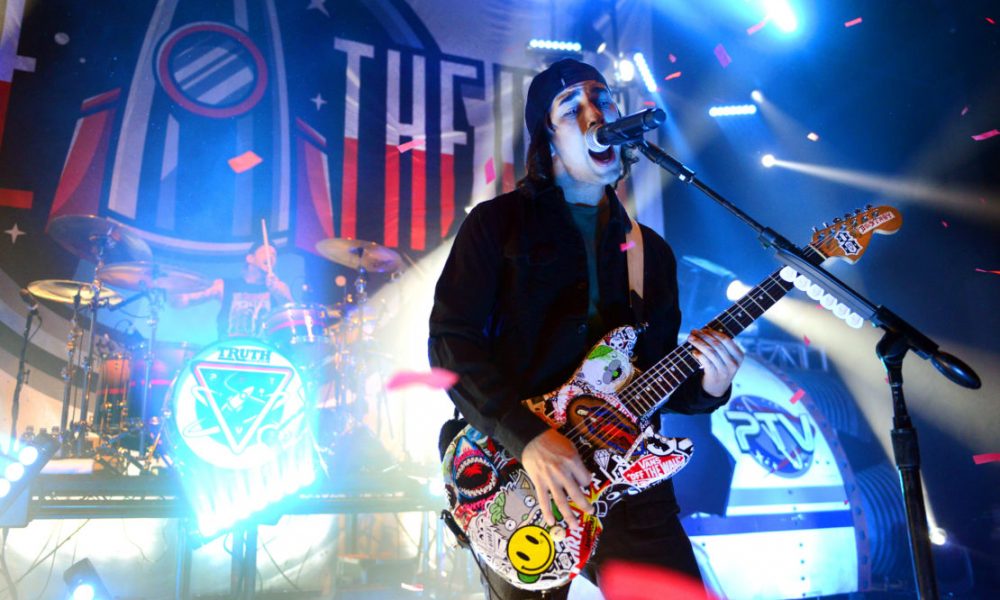Before we delve into this topic, it’s essential to lay out a framework, or at least demonstrate an understanding of a framework.
This is an article about music. Music and art is subjective; what makes “good” art is totally up to the subject. There are some universal truths about what makes art beautiful, like symmetry, harmony and composition, but the lines are often blurred.
After all, artists know that they must learn the rules, then break the rules. What’s the point otherwise? Pushing boundaries is essential. This is demonstrated by the core philosophy of jazz music: to be a musical overload in a sense, to keep the listener on the edge of their seat while the music teeters on what is and isn’t “listenable.” The chords are voiced so oddly that they’re almost dissonant — and the rhythms are in unusual time signatures that are nearly jarring, but somehow keep the head floating. This brings us closer to the meat of this piece. Jazz was created by black people. So were a lot of genres that are big today; they often started with the underdogs, by ethnic minorities, forced to gather with their kin because they weren’t allowed to frequent “white only” establishments — allowing unique cultures to develop. Black people are still a systematically marginalized group that was certainly placed into the same separate, racially homogenous playpen. Do systematically marginalized groups tend to have a knack for ingenuity in terms of art and cultural development? Does this box of disenfranchisement act as a pressure cooker for ethnic groups, requiring artistic output? If so, why?
While there are many global examples of cultural repression, typically from colonization and imperialism, African-Americans are an easy example to conceive of marginalization and the cultural repression that is a product of it. It seems that music and art were their methods of coping with this disenfranchisement. It began with their original purpose for existing here in America: slavery. Work songs were a way for African-Americans to deal with the tedium of field work, and a latent way of communicating contempt for their masters and overseers. This not only creates a unique sense of comradery that only music can accomplish (like playing in a band, it feels good to be a piece in the puzzle of a performance), but it allows Africans to hold onto an overarching cultural identity in a place where their identity was stripped away, by utilizing elements unique to their African dance and music. Work songs eventually developed into the “negro spiritual,” then gospel, eventually branching into blues and soul and many other offspring. What unites work songs and their offspring is the sheer sense of pain and coping manifested in the music. A problem is presented in the music and essentially resolved by itself, the music being an outlet for this pain of disenfranchisement.
To hone in on the focus of this piece, we’ll fast forward about a century. In the ‘60s and ‘70s, the soul genre had reached its height, and funk music materialized, which emerged from the spirit of soul, early disco and rhythmic blues (R&B) but with the sonic inspiration of jazz music and bebop jazz. What funk music did differently is it subsumed the party themes of disco, creating bass-driven, rhythm-centric tracks that were lyrically and melodically simple but with complex, ever-changing arrangements. This model was performance-centered, often with the intent of “letting go” in the most extreme sense, dancing and partying in such a hedonistic way that older generations, who embraced the soberer “letting go” of work songs and jazz clubs, looked down on it as morally inconsistent. In this sense, funk music had a niche audience within the black community, a subculture that focused on the ghettoized, the hedonists, those that really gained little benefit from the civil rights movement. Soul of this time was also under the same scrutiny, as it often centered around love and romance, which implies sex. Funk and soul were the black versions of the “sex, drugs and rock and roll” dynamic, these two genres being the counterculture of the time, contradicting the wholesome themes of gospel, blues, early soul and jazz. What unites all of these genres, to which we can attribute cultural ownership to blacks, is the fact that it offers us a snapshot of their respective time period. It shows us their unique social perspective.
Funk and soul music represent the same sense of coping, but with a more mature elucidation. In a sense, they represent a dualism. Soul expresses the profound pain and suffering of marginalization, which was ever-so-strong in this post-era of the civil rights movement that was left with unsolved issues, while funk represents the unrelenting spirit of black folk in the face of that struggle. According to the Journal of Black Studies, funk music was the music of the “young, Black, poor and working-class community after the euphoria of the civil rights movement faded, a period defined as ‘the decade of the detached.’” Eccentric, drug-fueled, soul-loving brothers and sisters wanted to make their statements in a world that was under the illusion of change. The civil rights movement was successful in its explicit goals, and new music began to take on a sort of “color-blindness,” where whites could disco with Latinos and blacks. However, the unequal distribution of power between races was still prevalent. Many black people that attained government work and civil equity essentially abandoned their other black counterparts. The ‘70s saw a dramatic downswing in social activism; protesting was limited to Black power movements (like the Black Panthers) and other fringe groups. While the civil rights movement brought about notable change, it was very much illusory. Funk was seen as the music of the poor, the gangsters, the deadbeats that were not recognized as equal members of society by those in power. Funk music was too eclectic and too eccentric to be presented to a mass (mostly white) audience by record companies. So black “funksters” danced, the lyrics consisting of passionate adlibs like “c’mon, dance!” and “YEAH!” with the partying spirit of a people that were not only finding a sense of belonging in the genre, but discovering an exuberant youthfulness in it, while their status in America was still in flux. I think this is illustrated well by the lyrics of the song “Open Up Your Mind (Wide)” by the Gap Band, a group of funk pioneers led by lead singer Charlie Wilson. It reads:
“You say you’re trying to handle the situation,
But your mind is filled with aggravation.
You say you can’t turn to your relations,
You say you can’t deal with world invasion…”
What this section expresses is a deep dread for the current conditions of the world surrounding black people: the harsh mistreatment of their kind at home, and the tumultuous global implications of the cold war, threatening them with nuclear annihilation. The song goes on to say, with optimism:
“Cause your mind is getting tighter,
Don’t think that the love’s gonna get any lighter!
Hoping that your world doesn’t get any wider…
Hoping that your life’s gonna get any brighter!
If you open up your mind,
Turn your head towards the sky,
(Every little thing’s gonna get a little better, yeah, yeah)…”
If you’re listening to the song while reading these lyrics, you can see how this music embodies the unrelenting spirit. It’s feel-good music. Now, Charlie Wilson is saying that the black condition and the global condition is harsh, but the way you react to it is controllable. If you focus on what the world isn’t, if your “mind is getting tighter” in this respect, you will be consumed by its terror. What Wilson wants is black folk to remember to focus on the positive and what we have, which is this music, the fact that the “love’s not gonna get any lighter,” and to forget about the worldly problems that we can’t do much about right now — he hopes that “their world doesn’t get any wider.” He wants his fellow African-Americans to understand that there is beauty in their marginalized existence, that while we may not have any privilege in this social world, we have prestige among our own community, that there is something wonderful about the unique culture we’ve created. He wants his community to “open up their mind” to this possibility and “turn their heads towards the sky” in hope of better days. This is a specific and subjective interpretation of the lyrics, but the theme of persevering with optimism in the face of hardship is explicit.
The topic of African-American culture and its subcultures could leave one lecturing for hours. The unique culture they formed while essentially being prisoners in America is as intriguing as it is beautiful. What makes it most admirable, and what somewhat explains their artistic ingenuity is the fact that this all had to be done in secret. Black people had to be black in private and form their own culture based on what they knew and what they were subsuming into their culture from Americans. This is not an isolated phenomenon — it speaks to a trend. What colonization and oppression do is bring a culture to its knees. In treating groups as second-class citizens, it attempts to halt their cultural progress to be supplanted by the values of the oppressor. To deprive the other of its otherness. To deprive a group of itself is to take away its sense of meaning in the world — and most people do not want to lose this without a fight. Meaning is all we have in this world, without it we are nothing to ourselves.
Groups claw at the surface of repression internally, by escaping into a creative world where they reassert their meaning. By creating this sense of fantasy and grandeur through expressive means, it acts as a catharsis for will repressed by the dominating force. Looking at funk, its wildly eclectic stage presence illustrates this. With eccentric costumes with aesthetic influences from cowboys, galactic themes, and samurais, it’s easy to see how this art form was the epitome of escapism. Art tends to act like this representation of a human ideal, an ideal that conflicts with reality. This is represented in the genre of magical realism. It often describes seemingly normal plotlines and authentic human representations (hence the “realism” part) with a phantasmagoric aspect, like supernatural powers within characters. Having a strong origin and presence in Latin America, this contradiction between the real and the ideal is representative of its postcolonial struggle. A struggle for meaning when it has been partially stripped away. A clamor for the ideal and the magical that contradicts with its reality — the reality of an oppressed population that is dealing with the residual effects of this colonial barbarism. Repression doesn’t have to result in good art, but it is undeniable that repression is an exaggeration of the human condition, of humans demanding meaning from a silent universe. The human condition results in art — so repression results in hyperbolized, over-the-top art.




Comments are closed.